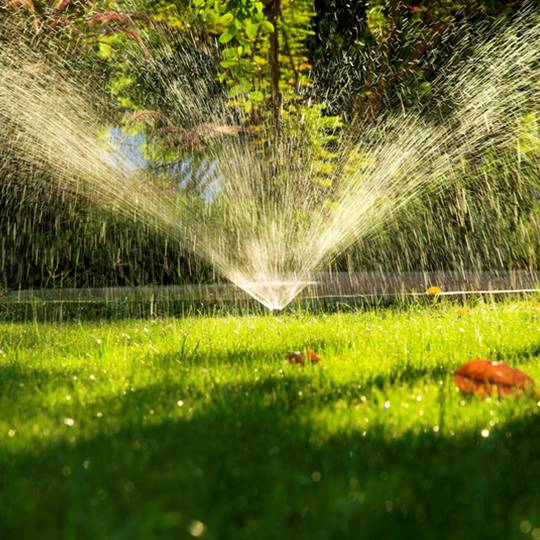Telltale Signs That It’s Time to Water the Lawn
Posted
July 28, 2016

Most lawns in Ohio don’t require a lot of human involvement to thrive. Sometimes, though, Mother Nature needs a boost. If you have a newly planted lawn or are in the middle of a long drought, you might want to supplement rainfall. You will know it’s time to water when the lawn fades to a dull green and your footprints remain visible in the grass. Read on to learn when to water your lawn and how to do it properly.
When you have an exotic variety of grass
You should pick a grass variety that grows well in an Ohio climate. This might sound obvious, but you’d be surprised how many people choose the wrong grass for their geography. Most landscapes in the Midwestern region do well with a blend of cool-season grasses like tall fescue, perennial ryegrass, and Kentucky bluegrass. Selecting the right seed mix for your area will help your lawn thrive even in less favorable, dry conditions.
When your grass is growing
During the growing season (typically spring and fall, depending on weather and grass type), it is best to water your lawn every two to three days. Make this a deep watering (about ½ to ¾ of an inch) that thoroughly soaks the soil. This amount of water should be enough to penetrate the soil to the desired depth. Use a rain gauge to measure the moisture and amount of time it takes for your soil to receive enough moisture. These thorough watering sessions will help your grass develop deeper, stronger roots and thrive for many seasons to come.
When you’ve had a long drought and continuous foot traffic
Cool-season grasses are incredibly resilient. These grasses grow vigorously in the spring and fall but “go dormant” when the weather is hot and dry. This dormancy is normal. The grass should bounce right back in the fall, especially if it was well fed and fertilized earlier in the year. If you can stand it, avoid watering the lawn in all but the most extreme droughts. Studies have shown that grass sod can survive with as little as ¼ inch of water over a month-long period. If your dormant lawn gets a lot of foot traffic from pets or kids, however, make sure to water it as much as is recommended and allowed by local authorities. Heavy use can stress dormant grass.
When the grass has been mowed short
You will need to water your lawn more often if you keep the grass short. Shorter grass can’t shade or cool the ground like tall grass. In a drought, taller grass retains moisture better and thus stays greener longer than shorter grass. You can get away with less frequent watering if you cut your bluegrass to 2 to 3 inches, tall fescue to 3 inches, perennial ryegrass to 2 inches. And during a long, hot summer, don’t cut the grass, regardless of type, until it rains two days in a row.
When the soil gets too hard
During a hot Ohio summer, you want the moisture level of your grass to be in the range of 8 to 10 inches. To check the moisture level, drive a screwdriver into the ground to the desired depth. If the ground is difficult to penetrate to that depth, your soil probably needs more water. Check the moisture in the spring and sporadically during the summer to ensure that your soil hasn’t dried out. Begin a consistent watering schedule in the spring and continue through the growing season to maintain the desired degree of moisture.
When the sun comes up
Early morning is the best time of day to water. This gives your grass (or other plant) the sustenance it needs for the entire day, gives the leaves time to dry out so they don’t develop fungal diseases, and increases the chances of water getting to the roots. When the sun is high in the sky, evaporation rates are higher and the water won’t reach down as far.
When you have a question…call us!
Your friendly neighborhood lawn-care professionals at Cardinal Lawn are here to help you determine when and how to water your lawn. Contact us today at 614-808-4446 for a free consultation.

Download Your FREE Summer Plant Care Guide
Help your plants make it through a hot & dry summer looking like a million bucks with our summer plant watering and maintenance guide!